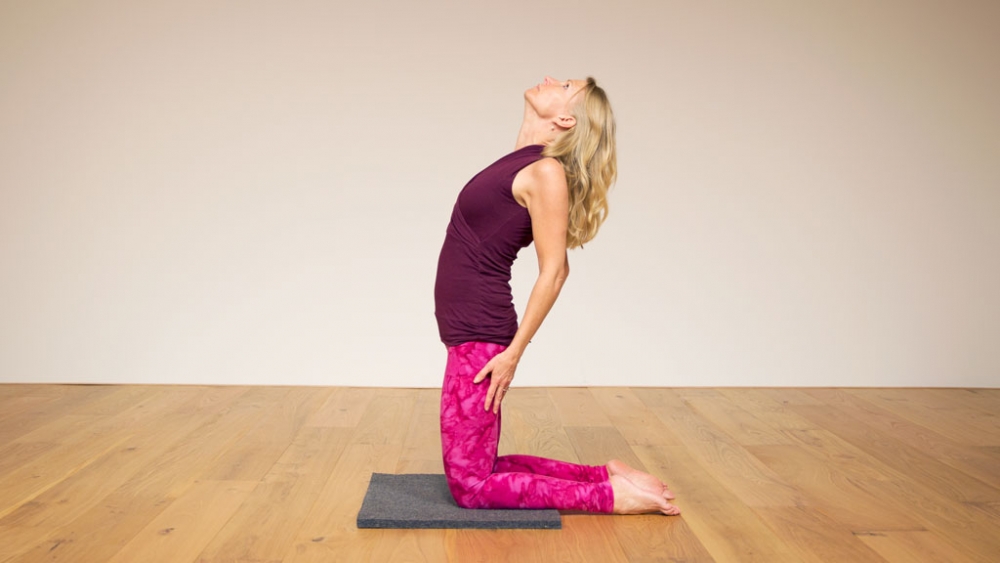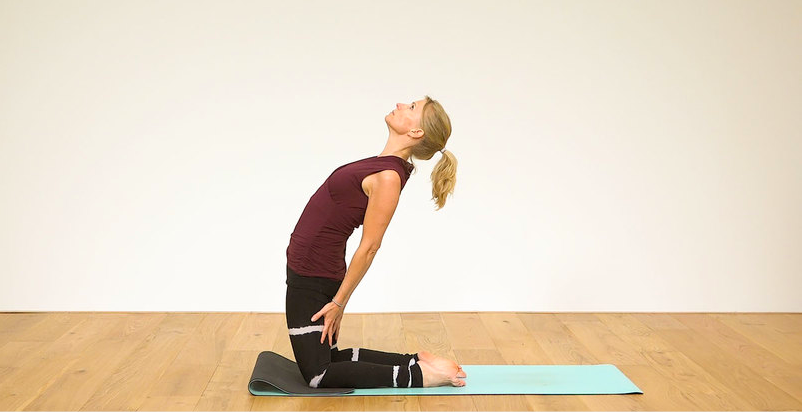What are the 5 Tibetan Rites?
The 5 Tibetan Rites are a form of Tibetan yoga said to be more than 2,500 years old, which were brought to light in a publication by Peter Kelder called The Eye of Revelation, written in 1939. Kelder claims this series of exercises was used by Tibetan monks to live long, vibrant and healthy lives.
He cited many benefits, including weight loss, better memory, improved physical strength, enhanced sense of wellbeing, even a reduction in the speed of the aging process – for this reason, these exercises are also referred to as the Foundation of Youth.
How can the 5 Tibetan Rites benefit you?
The 5 Tibetan Rites exercises are simple, you don’t need much space to do them in, or any specialist equipment and they can be done in around 10 or 15 minutes, depending on how many times you repeat them. The sequence stretches and strengthens the main muscles of your body and may improve balance. It’s also a great way to warm up for your yoga practice.
How many should you do?
‘Officially’ you repeat every exercise 21 times before moving on to the next exercise, but the key is to start slowly and build up the number of repetitions. For example, you could start with 1 to 3 reps, working up to 7.
Eventually, you can work up to 3 sets of 7 with rest in between (like I do in the video below). Don’t rush to get up to 21 repetitions, this is meant to be a lifelong practice so you can take your time to build it up. Pay attention to how your body feels and don’t strain or force anything. Try it out and see how you feel!
Practice the Tibetan Rites sequence with me!
EkhartYoga members can practice the whole sequence with me in this class – or follow the steps in the sequence below. If you’re not a member, check out our membership options and take a 2 week free trial!
How to do the 5 Tibetan Rites
1. Twirling
a. Stand with your feet a little apart and your arms shoulder height, palms facing down.
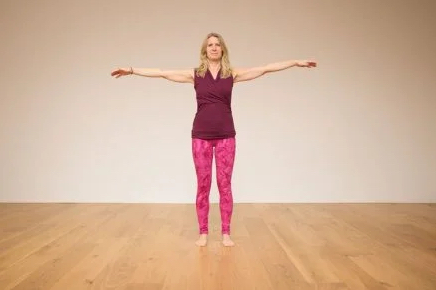
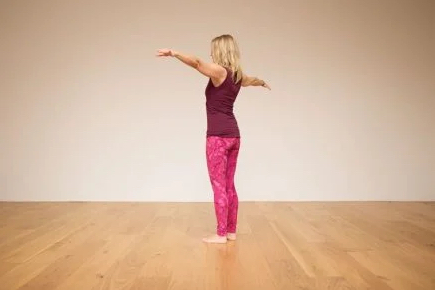
b. Begin to spin in a clockwise direction (as if you were standing on a clock) trying to keep your breath steady as you twirl.
Tip: Speed is not important here (the direction is) so don’t whirl so quickly that you fall over! If you feel dizzy when you stop spinning, bring your palms together and look at your thumbs. Breathe deeply.
2. Leg raises
a. Lie on your back on the floor with your palms by your sides and your legs straight.
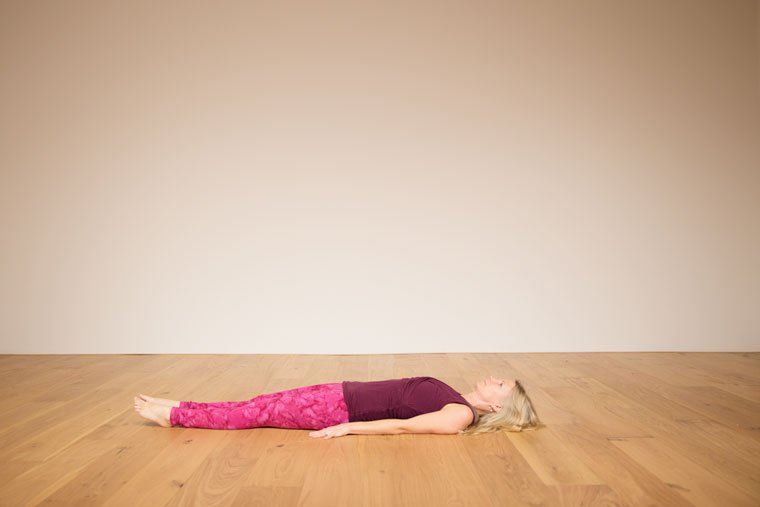
b. Engage your lower belly, inhale and raise your legs in the air whilst at the same time, lifting your head. Exhale and lower everything back down to the floor. Move between the two positions steadily and with control.
Tip: If this is too strong, place your hands underneath your buttocks or bend your knees. You shouldn’t feel any pain in your back or neck whilst doing this exercise.
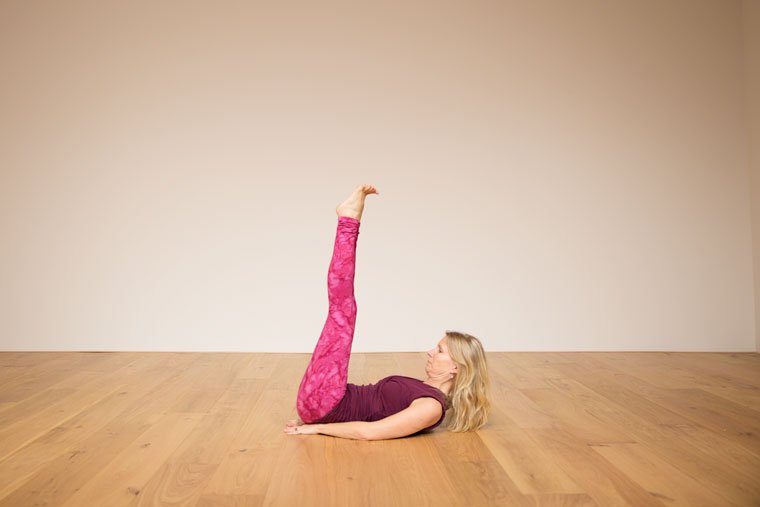
3. Dynamic Camel
a. Come to a kneeling position. As you inhale, arch your spine, slide your hands down the back of your thighs and tip the head slightly back.
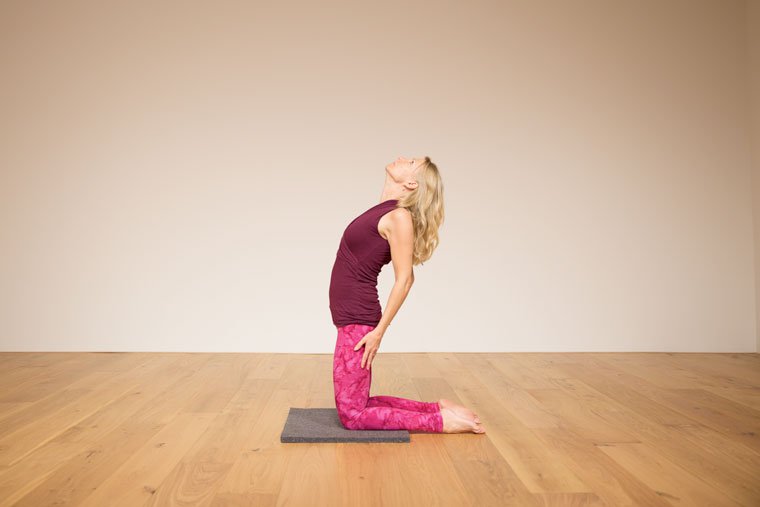
b. Exhale back to an upright position and tip the chin forwards towards the chest.
Tip: Keep the lower belly pulled in and up to protect the lower back. Only take the head back as much as feels right for your neck. Place padding under the knees if they’re sensitive.
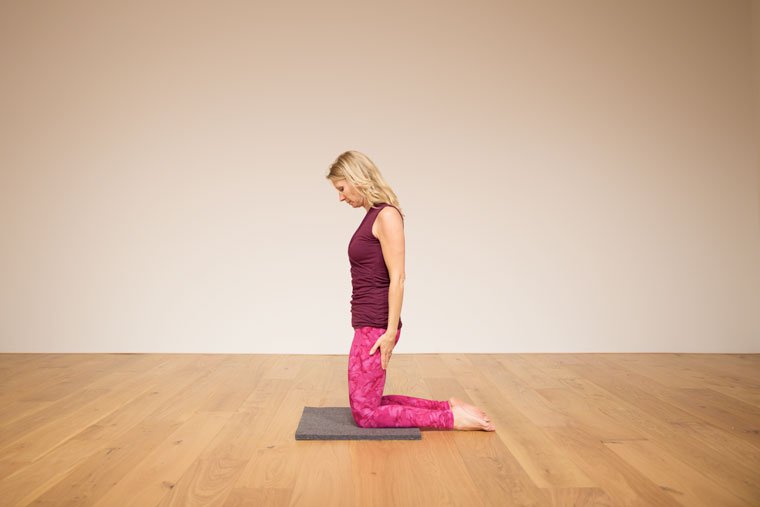
4. Moving tabletop
a. Come into a seated position with your legs stretched out in front of you, palms flat on the floor.
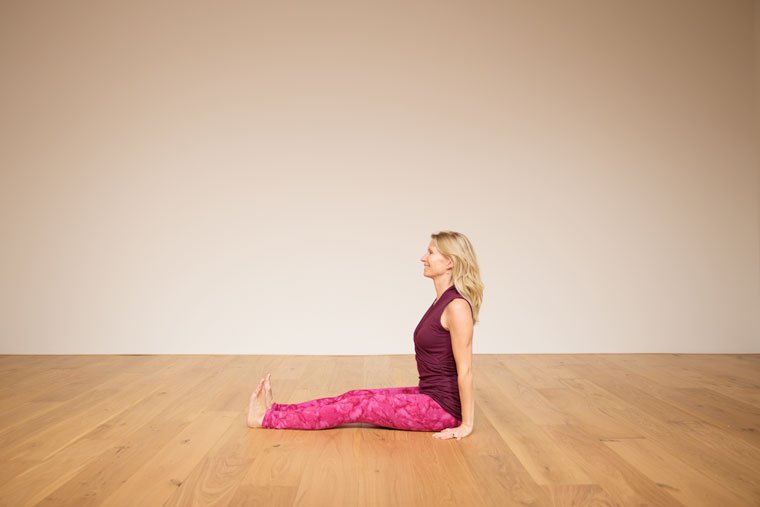
b. Breathe in, press into the hands and swing the hips forward and upwards so that you come into a ‘tabletop’ position, feet flat on the floor. You can keep the chin pointing upwards or take the head back if it feels okay on your neck. Exhale, swing the hips back and return to the original position as you exhale. Move between the two positions steadily and fluidly.
Tip: You can start from a bent-kneed position with the hips slightly forward from the hands until you build up the strength in your arms. You could also try placing your palms on blocks to give you a little more height.
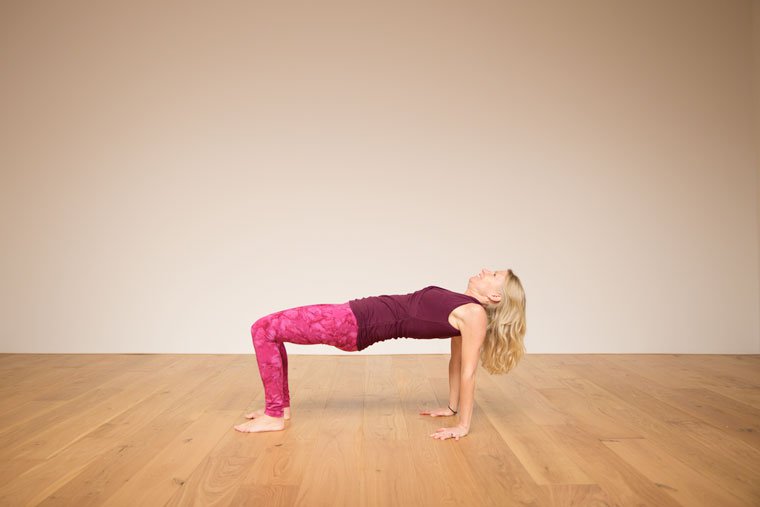
5. Downward Dog to Upward Dog
a. Come into a Downward Facing Dog pose, spreading your fingers wide and pressing your palms into the floor. Draw the thighs up and back and create length in the spine.
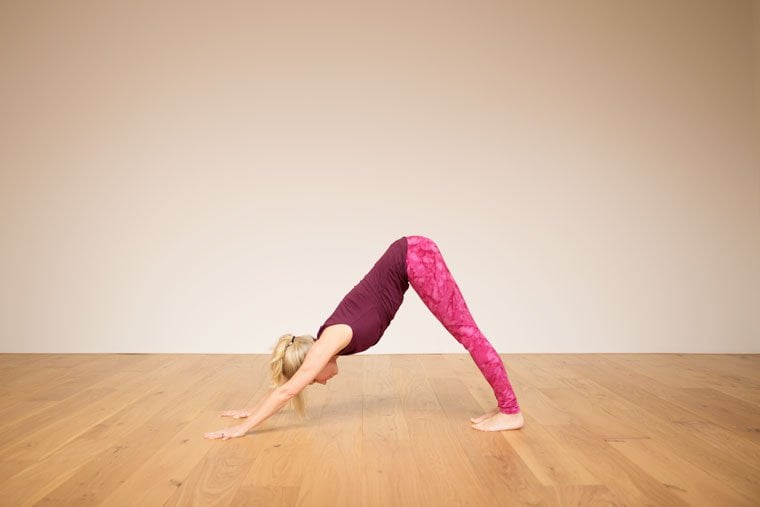
b. Inhale, roll over the toes, bring the shoulders over the wrists and come into Upward Facing Dog. Keep the neck long and the collar bones broad. As you exhale, press firmly into the hands, draw the hips up and back, and return to a Downward Facing Dog pose.
Tip: As you move between the two poses, keep the lower belly slightly engaged to protect your back. If you find it difficult to keep your legs straight, bend your knees slightly.
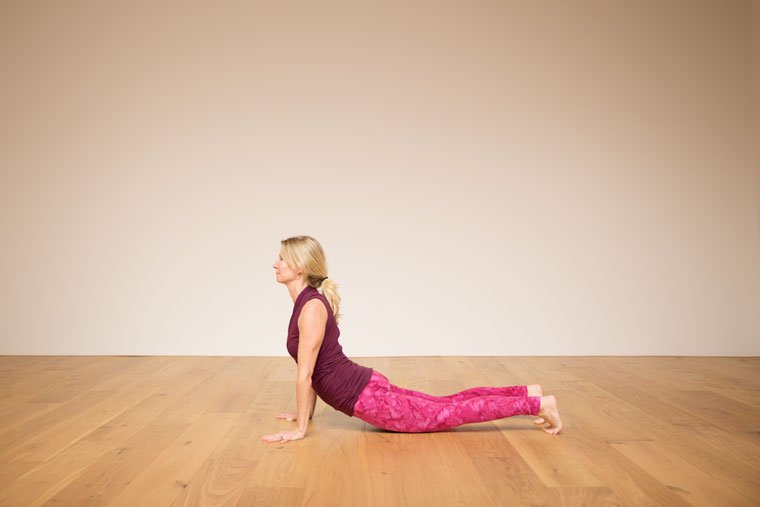
Rest …
At the end, take a few minutes to rest, feeling the energy you’ve created and allowing the breath to settle.
You might also like:
- Joint freeing exercises – 20 mins with Esther Ekhart – great to do when you’re short on time. You can do them any time, anywhere, no yoga mat or specific clothes required. They will get the energy moving and keep all your joints healthy and open.
- Or try Qigong arm swing and feel the benefits in just 6 minutes!

